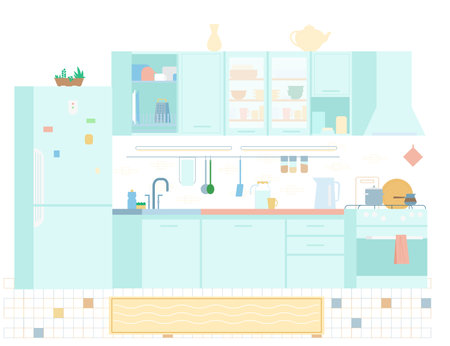Introduction to Soundproofing in UK Homes
Living in terraced or semi-detached homes is a quintessentially British experience, but it often comes with a set of unique challenges—one of the most common being unwanted noise. The close proximity to neighbours means that everyday sounds, from footfalls and conversations to blaring televisions and music, can easily travel between properties. This not only affects comfort but can also have a significant impact on overall wellbeing. Understanding why soundproofing matters is crucial for homeowners seeking peace and privacy. Noise transmission typically occurs through shared walls, floors, and ceilings, making effective soundproofing strategies essential. In these types of houses, flooring solutions play a particularly important role in reducing both airborne and impact noises. Addressing these issues not only creates a quieter living environment but may also add value to the property—a consideration not lost on discerning UK homeowners.
2. Fundamentals of Flooring Soundproofing
Understanding how sound travels through floors is crucial for anyone looking to improve soundproofing in terraced and semi-detached homes across the UK. In these properties, noise can easily transfer between neighbouring homes or between floors within the same house, causing disturbances and reducing comfort. There are two main types of noise to be aware of: airborne noise and impact noise.
Airborne Noise vs Impact Noise
| Type of Noise | Description | Common Sources |
|---|---|---|
| Airborne Noise | Sound that travels through the air and passes through structural gaps and materials. | Voices, television, music, barking dogs |
| Impact Noise | Sound generated by physical contact with the floor structure, causing vibrations. | Footsteps, dropping objects, moving furniture |
How Sound Moves Through Floors
In traditional UK housing stock, especially older terraced and semi-detached properties, floors are often constructed from timber joists with floorboards above and a ceiling below. Airborne noise can penetrate through cracks and gaps in these materials, while impact noise travels as vibrations directly through the structure itself. Without proper insulation or acoustic barriers, even normal daily activities can be heard next door or on a different level of the house.
Basic Principles of Effective Soundproofing
The key to effective flooring soundproofing lies in disrupting the transmission paths for both types of noise. This typically involves:
- Adding Mass: Heavier materials absorb more sound energy, making it harder for noise to pass through.
- Creating Separation: Decoupling layers (using resilient bars or floating floors) breaks the direct path for vibrations.
- Sealing Gaps: Filling cracks around skirting boards and floorboards prevents airborne noise leakage.
- Damping Vibrations: Using underlays or specialist acoustic membranes helps dissipate impact energy.
Summary Table: Basics of Flooring Soundproofing Methods
| Method | Main Benefit | Typical Application in UK Homes |
|---|---|---|
| Add Mass (e.g., dense boards) | Blocks airborne noise effectively | Laying over existing floorboards before carpets or laminate installation |
| Create Separation (floating floor) | Reduces both airborne and impact noise transmission | Installing a floating timber or chipboard layer on top of an acoustic underlay |
| Dampening Layers (acoustic underlay/membrane) | Cushions impacts; absorbs vibration energy | Beneath carpets, laminate, or engineered wood flooring in living rooms and bedrooms |
| Seal Gaps (acoustic sealant) | Prevents flanking airborne noise leaks | Around edges of rooms and between floorboards/skirting boards before redecoration or new flooring installation |
The Importance of a Layered Approach in UK Homes
No single solution addresses all sources of unwanted sound. For best results in British terraced and semi-detached properties, a layered approach combining several techniques is recommended. Understanding these fundamentals sets the stage for exploring specific solutions tailored to your homes unique construction and layout.

3. Choosing the Right Soundproofing Materials
When it comes to minimising unwanted noise in terraced and semi-detached homes, selecting suitable soundproofing materials is crucial. UK properties often contend with specific challenges, such as timber floorboards, shared party walls, and limited floor-to-ceiling heights. Here’s a practical overview of popular and effective flooring solutions for British households:
Acoustic Underlays
Acoustic underlays are one of the most straightforward options for upgrading your flooring’s sound insulation. Typically made from rubber, foam, or felt, these materials are installed beneath carpets or laminate floors.
Pros
- Easy to retrofit without major construction work
- Effective at reducing both impact noise (footsteps) and some airborne sound
- Available in various thicknesses to suit different needs
Cons
- Might not be sufficient for severe airborne noise issues
- The thicker the underlay, the more it can raise floor height—sometimes an issue in older UK homes with tight door clearances
Dense Mats and Barrier Sheets
High-density mats (such as mass loaded vinyl or heavy rubber sheeting) add substantial mass to your floor structure, which is key for blocking sound transmission between properties.
Pros
- Excellent at reducing airborne noise like voices or television sounds
- Can be combined with other solutions for improved performance
Cons
- Adds weight—important to check if your existing floor joists can support extra load
- Installation may require lifting floorboards or professional help
Decoupling Solutions (Floating Floors)
A floating floor system involves creating a layer that sits on resilient strips or pads, physically separating the walking surface from the subfloor. This decoupling method disrupts vibration paths, making it highly effective against impact noise.
Pros
- Dramatically reduces footfall and vibration transmission between floors
- Often used in combination with acoustic underlays for best results
Cons
- Tends to be more expensive and labour-intensive than simpler solutions
- Slightly raises finished floor height—a consideration for doorways and skirting boards in period properties common across the UK
Selecting What’s Best for Your Home
No single material offers a perfect fix. Many UK homeowners find that layering solutions—such as combining an acoustic underlay with dense mats or adopting a floating floor—yields the best outcome. Always weigh factors like installation complexity, budget, and how much space you can spare before committing to a solution. Proper research and sometimes professional advice can ensure your investment pays off in comfort and quiet.
4. Installation Approaches for Terraced and Semi-Detached Homes
Upgrading flooring for soundproofing in terraced and semi-detached homes requires careful planning due to common construction features—shared walls, suspended timber floors, and limited access to subfloors. Here’s a practical, step-by-step guide for retrofitting or upgrading floors in these typical British property layouts.
Step 1: Assess the Existing Floor Structure
Begin by identifying whether your home has solid concrete or suspended timber floors. Most period properties feature suspended timber, which transmits both airborne and impact noise more easily than concrete. Check for loose floorboards and gaps around skirting boards, as these are prime paths for sound leakage.
Step 2: Choose Suitable Soundproofing Materials
Select materials based on your floor type and budget. Common options include:
| Material Type | Main Benefit | Best For |
|---|---|---|
| Acoustic Underlay | Reduces impact noise from footsteps | Laminates, engineered wood, carpets |
| Mineral Wool Insulation (between joists) | Dampens airborne noise between floors | Suspended timber floors |
| Resilient Bars & Acoustic Boards | Add mass and decouple surfaces to block sound transmission | Bare floorboards or during major renovations |
| Sealant & Gap Fillers | Stops flanking noise through gaps and cracks | Around skirting, floor edges, pipe penetrations |
Step 3: Prepare the Floor Area
Clear the room completely. Lift existing carpet or laminate if present. For suspended timber floors, carefully remove floorboards to access the joist cavity. Vacuum out dust and debris to ensure insulation sits snugly.
Step 4: Install Soundproofing Layer(s)
For Suspended Timber Floors:
- Fit mineral wool or acoustic insulation tightly between joists (aim for at least 100mm thickness).
- If possible, install resilient bars on top of joists before re-laying floorboards to further break sound pathways.
- Replace floorboards securely or consider overlaying with acoustic boards for added mass.
- Add an acoustic underlay before laying your final flooring finish (carpet, laminate, etc.).
- Seal all gaps along perimeter edges with acoustic sealant.
For Solid Concrete Floors:
- Lay an acoustic underlay directly onto the concrete slab.
- If additional improvement is needed, consider floating a secondary layer of high-density acoustic board prior to your chosen finish.
- Use appropriate sealants around the edges where flooring meets walls.
Step 5: Pay Attention to Details and Flanking Paths
No matter how good your main installation is, neglecting small gaps can undermine your efforts. Carefully seal all joints around pipes, radiators, and under skirting boards. Consider replacing skirting after floor upgrades for a neater finish and better airtightness.
Troubleshooting Common Issues
| Issue | Plausible Cause | Recommended Fix |
|---|---|---|
| Creaky floors after upgrade | Poorly secured floorboards or underlay not flat | Lift and refit boards; check underlay coverage; re-screw as needed |
| No significant reduction in airborne noise | Insufficient insulation depth or missed perimeter gaps | Add more insulation; reseal edges thoroughly; check wall/floor junctions |
| Draughts after work completed | Missed sealing of gaps or holes left by old fixtures | Inspect with torch; use flexible acoustic mastic to fill missed areas |
Final Tips for British Homes:
If you live in a conservation area or listed building, always check with your local council before undertaking substantial works—especially if lifting original floors or changing structural elements. In many cases, simple underlay and insulation upgrades cause minimal disruption yet provide noticeable improvements in comfort and privacy.
5. Budget Considerations and DIY vs. Professional Fitting
When planning to soundproof flooring in terraced or semi-detached homes across the UK, budget is often a major factor influencing your decisions. The costs for materials such as acoustic underlay, resilient bars, or specialist soundproofing mats can vary widely, with basic solutions starting at around £10–£20 per square metre and premium systems reaching upwards of £50 per square metre. It’s also essential to consider hidden costs such as delivery charges, additional layers (like plyboards), and removal or disposal of old flooring.
Typical Installation Timeframes
For a standard room, DIY soundproofing can take anywhere from a full weekend to several days, depending on your experience and the complexity of the product chosen. Professional installers familiar with British construction methods and regulations can usually complete the job more swiftly—often within a day for straightforward projects—minimising disruption to daily life. However, you’ll need to factor in lead times for bookings, especially in busy periods.
DIY: Pros and Cons
Tackling soundproofing as a DIY project can be tempting if you’re handy and looking to save on labour costs. Many products available in UK stores are designed with homeowners in mind, featuring simple interlocking systems or clear instructions. However, there are risks: improper fitting can reduce effectiveness and may not comply with local building regulations or fire safety standards—an important consideration in UK homes where compliance is monitored.
Professional Fitting: When to Invest
Engaging local professionals offers peace of mind; they bring expertise on both installation techniques and UK-specific standards such as Part E of the Building Regulations, which governs noise transmission between dwellings. A qualified installer can ensure that materials are properly laid, joints are sealed, and any structural considerations unique to older British properties are addressed. While this route typically increases upfront costs by 30–50%, it may add value by delivering consistent results and certification for future property sales or landlord requirements.
Making Your Decision
If your main goal is cost savings and you have some experience with home improvement projects, DIY might suffice for basic underlays or floating floors in less critical rooms. For more complex needs—such as multi-layer solutions, listed buildings, or where maximum sound reduction is required—professional fitting is strongly recommended. Always obtain multiple quotes from trusted local tradespeople who understand the nuances of UK housing stock. Balancing your budget with long-term performance will lead to the most satisfactory outcome for your home’s acoustics.
6. Common Mistakes and Maintenance Tips
When it comes to soundproofing with flooring in terraced and semi-detached UK homes, many homeowners make similar mistakes that can undermine their efforts. One frequent oversight is neglecting the small gaps and edges around skirting boards or door thresholds—sound easily leaks through these weak points, rendering even premium acoustic underlays far less effective. Another common error is underestimating the impact of lightweight or floating floors; without properly installed acoustic membranes or dense underlays, these solutions may actually amplify footfall noise.
Some property owners opt for quick fixes, such as inexpensive foam mats or thin carpets, expecting them to deliver significant sound reduction. In reality, true sound insulation demands materials with mass and density. Additionally, DIY installations often overlook critical steps like staggering seams on underlayments or sealing joints with acoustic mastic, both of which are vital for long-term performance.
For maintaining your soundproof flooring, regular checks are essential. Inspect the condition of seals and edges annually—look for shrinkage, cracking, or gaps that might allow airborne noise to creep in. Clean your floors using non-abrasive products to avoid damaging specialist membranes or barriers beneath the surface. If you have floating floors with resilient layers, ensure there’s no movement or lifting over time, as this can create new paths for sound transmission.
Lastly, always follow manufacturer guidance when it comes to cleaning methods and recommended products for your specific flooring system. If your home experiences significant settling or structural movement—a not uncommon issue in older British housing stock—consider a professional inspection every few years to confirm all acoustic measures remain intact. By staying vigilant about these common mistakes and adhering to proper maintenance routines, you’ll preserve the effectiveness of your soundproofed floors for years to come.
7. Summary and Further Resources
Soundproofing your floors in terraced and semi-detached UK homes is both a practical and worthwhile investment. Throughout this guide, we have explored various flooring solutions — from underlayments to floating floors and acoustic mats — each offering unique benefits tailored for British properties with shared walls and tight spaces. Key takeaways include understanding the types of noise you are tackling (impact versus airborne), assessing your existing floor structure, and selecting materials that suit both your performance goals and budget.
For homeowners ready to take action or continue their research, there is a wealth of UK-specific support available. Reputable suppliers such as Soundstop, Noisestop Systems, and Building Materials UK offer a broad range of soundproofing products with expert advice. If you’re looking for tailored guidance or want to connect with others tackling similar challenges, forums like the Screwfix Community Forum and the DIYnot Floors, Stairs & Lofts Forum are invaluable resources.
As soundproofing requirements can vary widely between Victorian terraces in London and 1930s semis in Manchester, it’s always wise to consult with local professionals who understand UK building regulations and can recommend solutions suitable for your specific property type. By combining practical know-how with reliable support networks, you’ll be well-equipped to create a quieter, more comfortable home.

